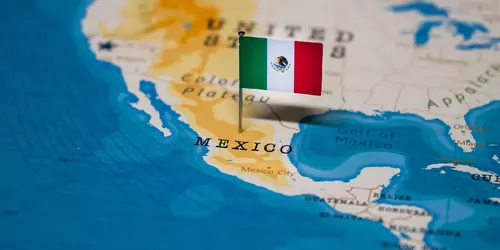The climate year of Mexico
Fascinating Mayan sites, seemingly endless white sandy beaches and pulsating metropolises like Mexico City, Monterrey, Veracruz or Acapulco - all this belongs to Mexico. The Central American state, actually United Mexican States, is the fifth largest in the entire American continent with an area of 1,972,550 km². Due to its size as well as the geographic and geological conditions, Mexico has very different climatic zones. The country is very mountainous, especially the inland is characterized by a highland block. The volcano Citlaltépetl is the highest elevation with a height of 5636 meters. Its summit is covered with snow until well into the summer months. The climate here is mainly alpine, with long, cold and snowy winters and short, rather cool summers. Other parts of the country have a subtropical climate, especially in the area of the Tropic of Cancer and in the southeast of the country. Occasionally, for example on the peninsula Yucatan, a hot, dry desert climate is also prevalent.
General information about Mexico
Mexico attracts visitors for two main reasons: Sandy beaches and Mayan cities. The country borders the Pacific Ocean to the south and west, the Gulf of Mexico to the east, and the Caribbean Sea to the southeast. White sandy beaches surrounded by lush green jungle vegetation and turquoise blue waters are found mainly at Playa del Carmen. Playa Punta Bete and Isla Holbox are also among the most beautiful beaches. Cancún, located in the north of the Yucatan Peninsula, is the main attraction for bathers and party people. In addition to the paradisiacal beaches, the Mayan sites also attract visitors. Especially the temple city of Teotihuacán not far from Mexico-city as well as the legendary Chichén Itzá on the Yucatan peninsula are world famous and attract countless visitors every year. Also among the most visited destinations are the caves of "Rio Secreto". The underground cenotes offer a magnificent natural spectacle.
Tourism Mexico
Mexico's climate is mainly determined by the different altitudes, but also by the influence of the cooling Atlantic current. Lower than 600 meters are only a few parts of the country, most are located in the Pacific coastal belt and on the Yucatan Peninsula. Most of the country, however, lies at altitudes up to 1800 meters. The climate here is mainly characterized by aridity, although it can get sensitively cold in winter. Although snowfall is possible, precipitation usually does not stop until the altitude reaches 3000 meters. Even in the mountains it is quite warm during the day, for example Mexico City at an altitude of 2300 meters above sea level has an average annual temperature of 23 °C. The rainy season falls in the months between May and November, and hurricanes can occur from June. The plains of the Caribbean coast are considered the region with the highest rainfall, while the Gulf of California and the Pacific coast are very dry. The best time to travel is generally considered to be the fairly dry months between December and April.





